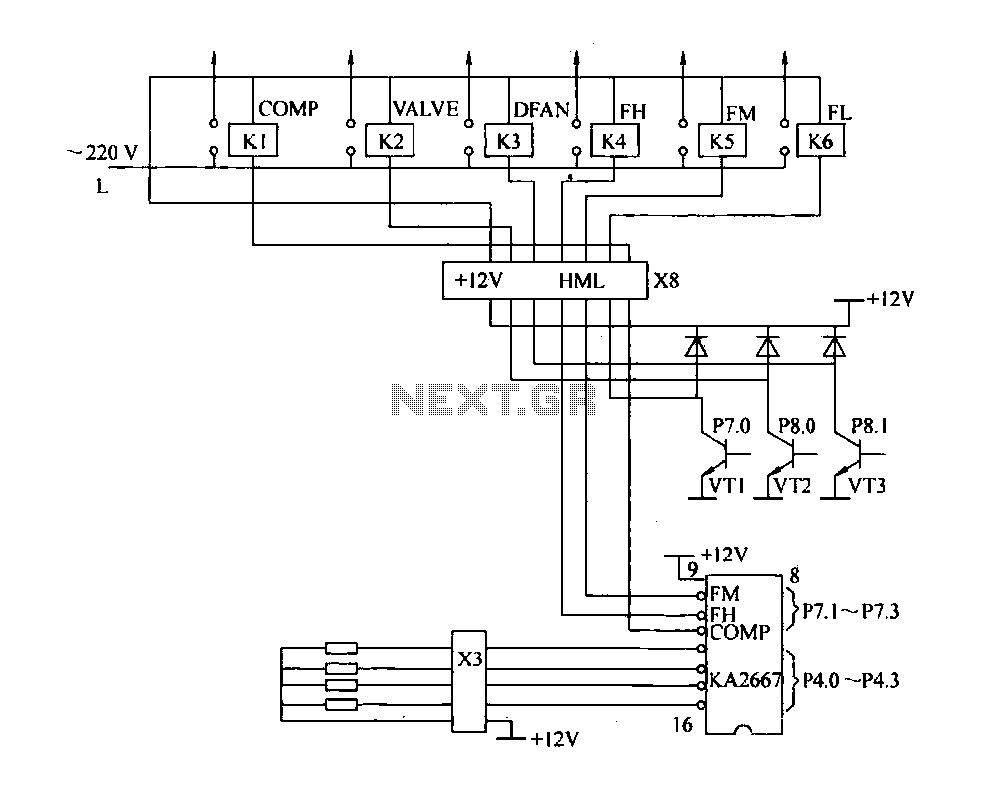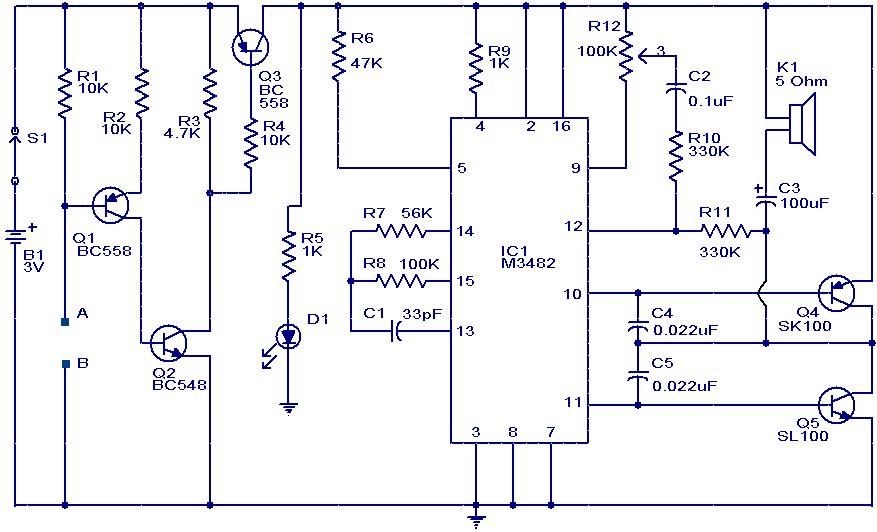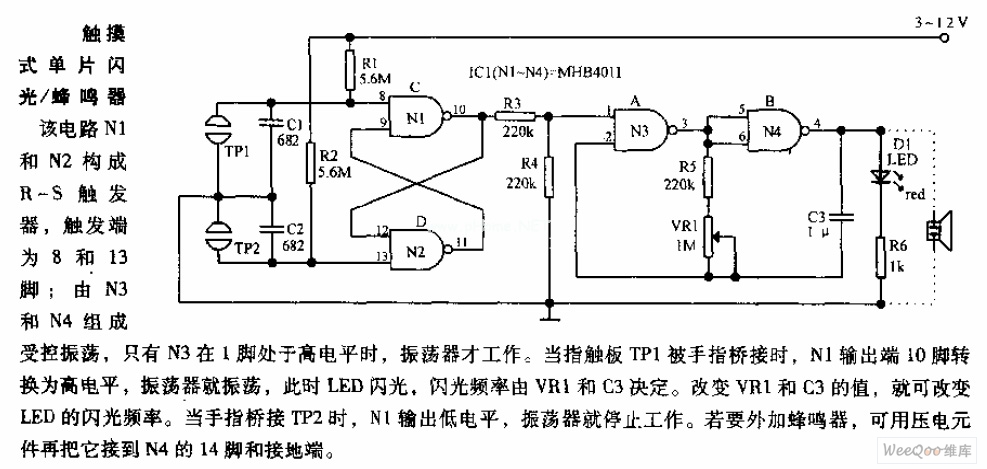
Driving circuit schematic

The driving circuit depicted in Figure 18-12 consists of a connection between the driving portion, the microcontroller, and the air conditioning operation components of the bridge. The microcontroller's digital signal levels from ports P4.0 to P4.3 (approximately 12 feet) and P7.1 to P7.3 (approximately 12 feet) interface with an output driver chip. This setup enables control over a stepper motor and relays K4, K5, and K1, facilitating the operation of the fan, adjusting the indoor fan speed, and managing the compressor's start and stop functions.
The driving circuit serves as an essential interface between the microcontroller and the air conditioning system. It utilizes digital signals from the microcontroller to engage various components of the system effectively. The microcontroller's ports P4.0 to P4.3 and P7.1 to P7.3 are configured to transmit control signals over a distance of approximately 12 feet, ensuring that the driving circuit can be positioned away from the microcontroller while maintaining reliable communication.
The output driver chip plays a crucial role in amplifying the microcontroller's signals, allowing for the control of high-power devices such as stepper motors and relays. The stepper motor is responsible for precise positioning and control of airflow, while the relays K4, K5, and K1 manage the operational states of various components, including the indoor fan and compressor.
The fan operation is controlled to provide different speed settings, which is essential for maintaining optimal indoor climate conditions. The medium speed setting allows for balanced airflow, while the compressor control functionality enables the system to efficiently manage cooling cycles, turning on or off as required based on the environmental conditions and user settings.
In summary, this driving circuit is a sophisticated arrangement that integrates microcontroller signals with power management components to deliver efficient control of an air conditioning system, enhancing user comfort and system performance.Driving Circuit: the driving circuit shown in Figure 18-12. Driving portion is connected to the microcontroller and the air conditioning operation member of the bridge. Microco ntroller digital signal level P4. 0-P4.3 port (~ 12 feet foot) and P7. 1-P7.3 port ( ~ foot foot) to the output driver chip can be to control the stepper motor and the relay K4, K5, Kl is energized. Thus realizing the fan, the indoor fan speed, medium speed and compressor open to stop control.
The driving circuit serves as an essential interface between the microcontroller and the air conditioning system. It utilizes digital signals from the microcontroller to engage various components of the system effectively. The microcontroller's ports P4.0 to P4.3 and P7.1 to P7.3 are configured to transmit control signals over a distance of approximately 12 feet, ensuring that the driving circuit can be positioned away from the microcontroller while maintaining reliable communication.
The output driver chip plays a crucial role in amplifying the microcontroller's signals, allowing for the control of high-power devices such as stepper motors and relays. The stepper motor is responsible for precise positioning and control of airflow, while the relays K4, K5, and K1 manage the operational states of various components, including the indoor fan and compressor.
The fan operation is controlled to provide different speed settings, which is essential for maintaining optimal indoor climate conditions. The medium speed setting allows for balanced airflow, while the compressor control functionality enables the system to efficiently manage cooling cycles, turning on or off as required based on the environmental conditions and user settings.
In summary, this driving circuit is a sophisticated arrangement that integrates microcontroller signals with power management components to deliver efficient control of an air conditioning system, enhancing user comfort and system performance.Driving Circuit: the driving circuit shown in Figure 18-12. Driving portion is connected to the microcontroller and the air conditioning operation member of the bridge. Microco ntroller digital signal level P4. 0-P4.3 port (~ 12 feet foot) and P7. 1-P7.3 port ( ~ foot foot) to the output driver chip can be to control the stepper motor and the relay K4, K5, Kl is energized. Thus realizing the fan, the indoor fan speed, medium speed and compressor open to stop control.





